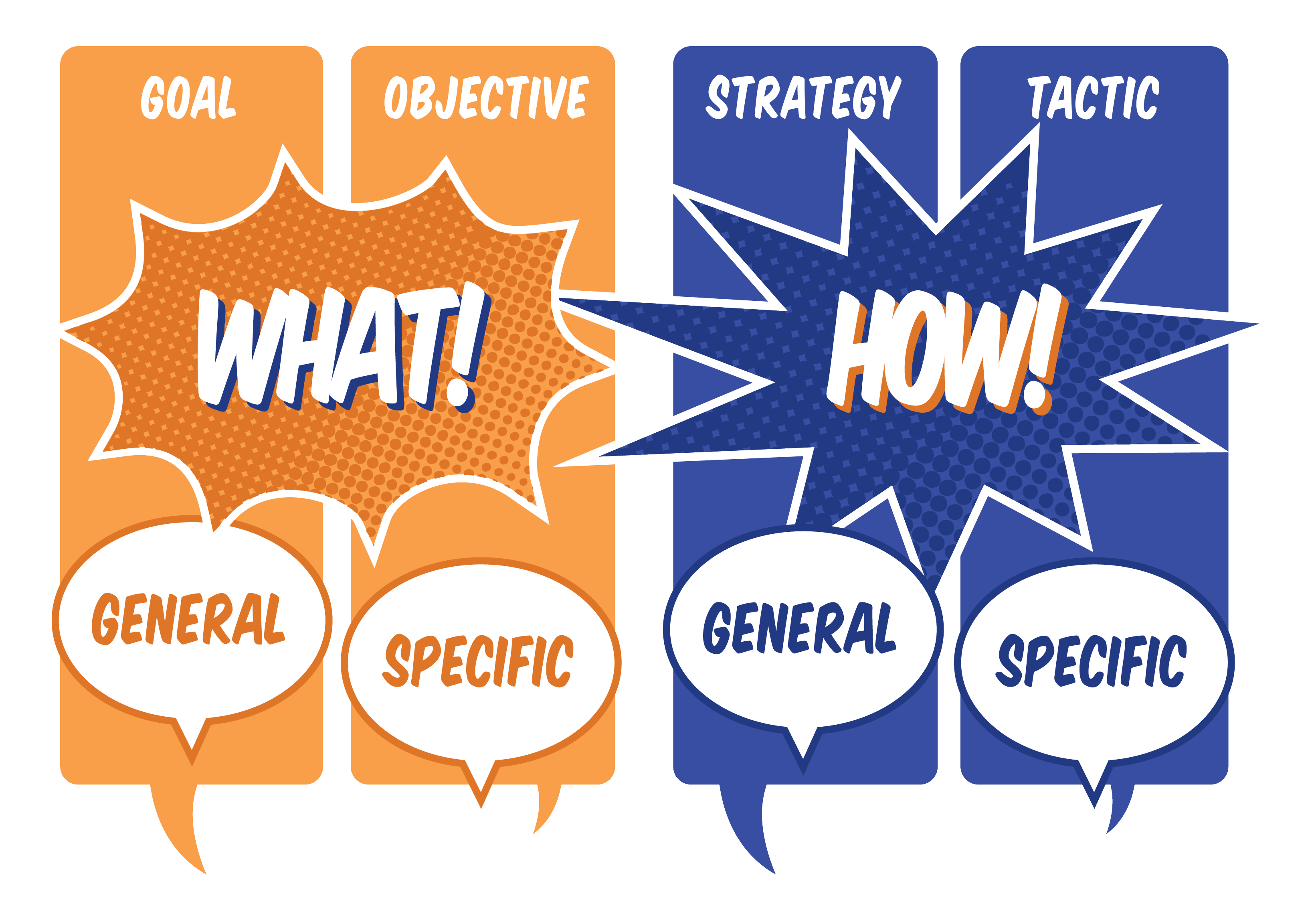Note: This article is an excerpt from the new book, STRATEGIC: The Skill to Set Direction, Create Advantage, and Achieve Executive Excellence
Do you and your team have the same definition of strategy? The following are examples of strategies pulled from real companies:
“Become more profitable.”
“Grow our audience.”
“Be number one in the market.”
“Execute integration and capture synergies.”
“We’re trying to find the people who were customers and didn’t come back. That’s a major strategy.”
That last one still cracks me up. Make no mistake: bad strategy can literally kill a company. In a 25-year study of 750 bankruptcies, the researchers found that the number-one cause of bankruptcy was bad strategy. Bad strategy often begins with imprecision in applying planning terms to our business. As the Chinese philosopher Confucius noted, “The beginning of wisdom is to call things by their right name.”
GOST Framework

I created the GOST Framework to help leaders and their teams develop a consistent approach to answering these two key questions and provide a common language for strategy. A goal is WHAT generally you are trying to achieve, let’s say reaching the top of a mountain. The objective is WHAT specifically you are trying to achieve, so in this example ascending 3,000 feet each day for four days until we reach the 12,000-foot summit. Objectives are often described with the acronym SMART: Specific, Measurable, Achievable, Relevant, and Time-bound.
The strategy is HOW generally you’ll reach the goal and objective, in this case your general approach to reaching the top of the mountain—hiking straight up, zigzagging, or ascending a path on the opposite side. The tactics then are HOW specifically you’ll achieve your goal—using ropes, pickaxes, or maybe an inflatable raft to paddle around to the other side. Here is an example for the business application of the GOST Framework:
Goal: Become the market leader in wearable biotechnology.
Objective: Achieve 40% market share in the apparel category by Q4.
Strategy: Neutralize competitor product entries through real-time innovation.
Tactic: Key customer input to product engineering platform on a quarterly basis.
Strategy can be defined as the intelligent allocation of resources through a unique system of activities to achieve a goal. Simply put, strategy is how you plan to achieve your goal. With this definition comes the caveat of competition—both direct and indirect—which will attempt to prevent you from reaching your goal. That is why plans must be fluid and strategy created and calibrated with a continuous flow of strategic thinking. Based on strategy’s definition as “the intelligent allocation of resources through a unique system of activities to achieve a goal,” let’s break strategy down into its three primary components:
1. Allocation of Resources. How you and your organization use your resources—time, talent, and budget—comprises your strategy. You may have a strategy written down in a PowerPoint deck, but observe how your people are spending their time, talent, and budget every day and you’ll see your true strategy. Discipline is a key ingredient. Aimlessly investing a few hours each day on tasks that are not directly supportive of your goals may seem productive but will destroy your chances of real success. If you have not clearly written out and communicated the strategy on a consistent basis, then where people channel their resources becomes a matter of chance. Good leaders don’t leave strategy to chance.
2. Unique System of Activities. Perhaps the most common error in business planning is mistaking operational effectiveness for strategy. Operational effectiveness is the proverbial wolf in strategy’s clothing. It means performing similar activities in a similar manner as competitors, trying to do them a little better or faster. However, employing operational effectiveness without strategy is like running the same race as competitors, only hoping to run a little faster. Creating strategy indicates that we are going to run a different course than our competitors are running—one that we ourselves have designed to win.
A study of more than 200 companies found that 93% of the top 20% of financial performers have a strong form of differentiation at their core. Do you? If your strategy does not include different activities or similar activities performed in different ways, then it’s not going to create distinct value. Not until you get off the beaten path can the beating begin.
3. Achieve a Goal. In preparation for facilitating strategy workshops and executive coaching with senior executives, I review roughly 300 plans a year, and some are too complex, too long, or both. A good plan simply answers the two questions we introduced earlier:
1) What are you trying to achieve? 2) How will you achieve it?
Your goal and objective represent the answer to the first question (what you are trying to achieve), and strategy and tactics answer the second question (how you will achieve it). While it may be tempting to start with the strategy in developing a plan, remember that you first have to determine your destination before you can identify how to get there.
Learn more and order your copy of STRATEGIC: The Skill to Set Direction, Create Advantage, and Achieve Executive Excellence today at www.Strategic-Book.com
